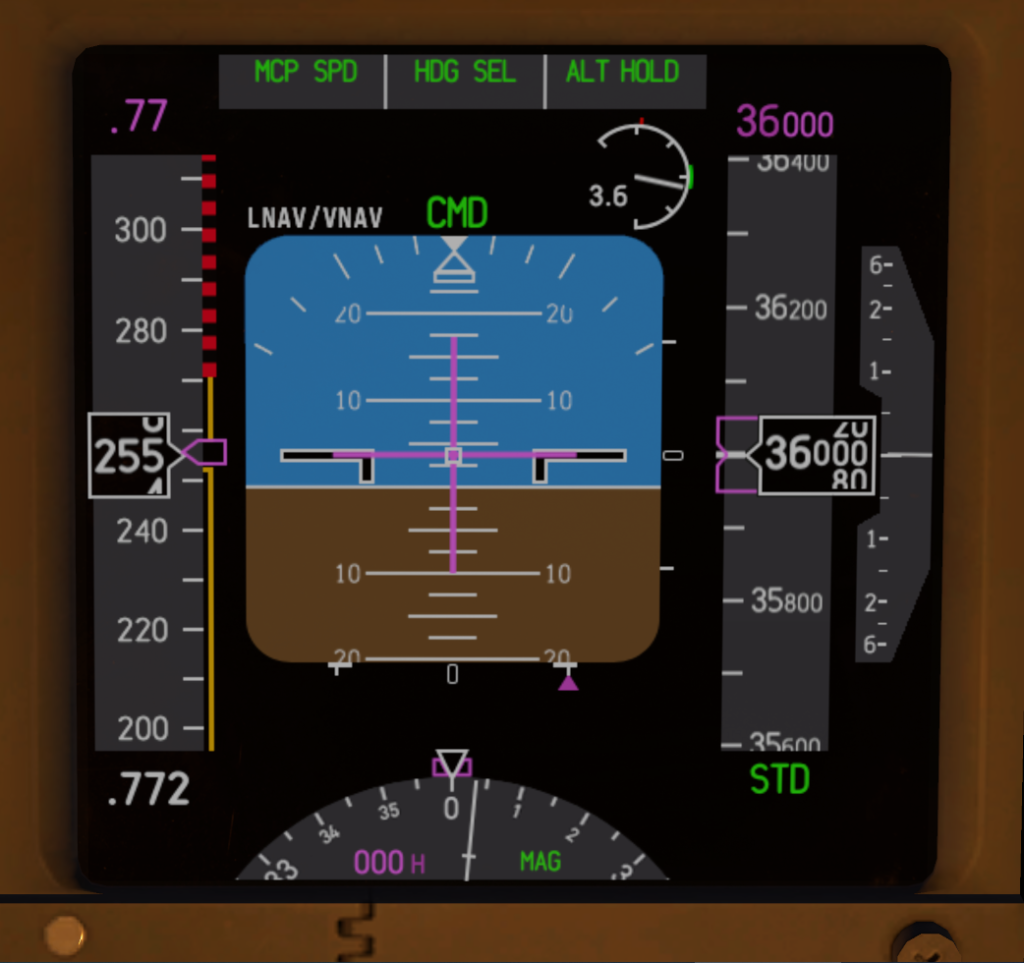
Planes are amazing things. With almost turnkey reliability, we can jump in a flying machine that can transport us at over three quarters of the speed of sound, over six miles in the air.
Like everything else, though, this amazing technology has its limits due to some basic physical laws. Wings require a certain minimum airspeed to generate lift — and you want to make sure that you fly somewhat faster than that, so the airplane keeps flying. At low aircraft weight, especially with flaps out, the minimum speed can be quite low — maybe only 120 knots or so.
There’s also an upper airspeed limit, too, of course. Dynamic air pressure increases as the square of the speed. On the 737-800, this is something like 340 knots indicated airspeed at sea level. We’re carrying a ridiculous amount of fuel on this test flight (a mission to find the magnetic North pole and also to see if a 220,000lb 737-800 can fly), so our minimum clean airspeed is higher than usual (the wing must generate more lift to offset the weight of the fuel.) This higher speed still isn’t anywhere near the maximum of 340, though, so we’re good to go, at least at first.
The problem is that there’s also a maximum Mach number. Fly faster than this, and shock waves can be set up that can cause instabilities or stresses. And the same Mach number happens at lower indicated airspeeds, with increasing altitude.
Eventually, the highest speed that the plane can safely fly dips uncomfortably close to the minimum speed required to keep it in the air. Welcome to “coffin corner.” Fly much faster, and the airframe is overstressed. Fly much slower, and the plane falls out of the sky.
The 737-800 flight shown above is still relatively safe (getting that heavy a 738 airborne, even from KEDW, was the tricky part). It’s stable now, and the minimum speed will decrease as fuel is burned off. Even now, it’ll probably still fly at 220ish without flaps. Were there to be a problem, the solution is to descend.
…Now to figure out where to land. I wonder if CYLT (Alert, Canada) is modeled?

